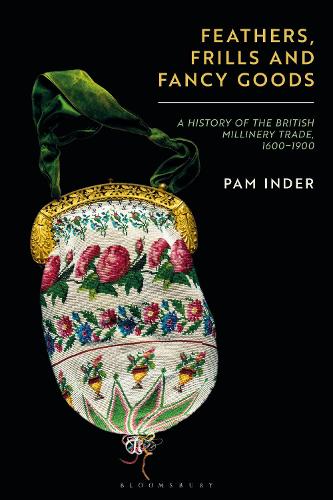
Feathers, Frills and Fancy Goods: The British millinery trade from the 17th to the 19th centuries
Publishing Details
Feathers, Frills and Fancy Goods: The British millinery trade from the 17th to the 19th centuries
By (Author) Dr Pam Inder
Bloomsbury Publishing PLC
Bloomsbury Visual Arts
5th March 2026
United Kingdom
Classifications
Tertiary Education
Non Fiction
Fashion and textile design: accessories
Social and cultural history
Physical Properties
304
Width 156mm, Height 234mm
Description
Tracing its development from a trade devoted to selling small needlework articles, ribbons and trimmings to one chiefly concerned with making and selling hats and bonnets, Feathers, Frills and Fancy Goods is an examination of the millinery trade from the early 17th century to the Victorian period.
The term milliner derives from milan-er seller of goods from Milan. Milliners sold small wares pins, needles, thread, tapes, ribbons, laces, soft leathers for belts and purses, gloves, hosiery and other decorative items which often, but not invariably, included caps and hats. Feathers, Frills and Fancy Goods traces the history of the millinery trade from the late 16th century, when most milliners were men, to the 19th century, when an increasing number of women had moved into the industry, and the term milliner began to take on its contemporary meaning of hat maker/seller.
Drawing on a wealth of unpublished and primary sources, and illustrated with over 65 images, Feathers, Frills and Fancy Goods traces the evolution of this complex and under-researched trade and grants new insights into working class life in 18th- and 19th-century Britain.
Author Bio
Pam Inder is an independent scholar and was formerly Curator of Applied Arts at first Exeter and then Leicestershire Museums, UK (specialising in dress history), after being an Assistant Curator at Birmingham City Art Gallery, UK. She later taught at Staffordshire and De Montfort Universities, UK. She is the author of the companion books, Busks, Basques and Brush-braid (Bloomsbury, 2020) and Shirts, Shifts and Sheets of Fine Linen (Bloomsbury, 2024).
